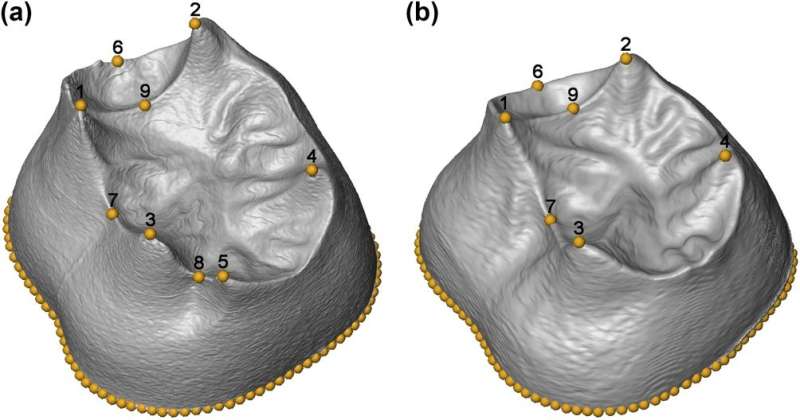First 3-D morphometric study of the molars of Sima de los Huesos

The Dental Anthropology Group of CENIEH has just published a paper in American Journal of Physical Anthropology on the morphological analysis of the dentin in the lower molars of the population of the archaeological site of Sima de los Huesos (Atapuerca, Burgos).The researchers used three-dimensional geometric morphometry to study the origin of the Neanderthals.
In this innovative study, in which scientists from University College London also participated, 85 molars were analyzed using computerized axial microtomography, which produces high-resolution virtual sections.
Previous geometric morphometric analyses have been based on two-dimensional images such as photographs. The application of new technologies such as micro-CT and the 3-D reconstruction software Amira has enabled the first work of geometric morphometry using three-dimensional images.
"With the results obtained, we have been able to ratify once again the similarities found between the population of Sima de los Huesos and the Neanderthals, and the differences between these and Homo sapiens," says María Martinón-Torres, co-author of this work.
Despite the notable affinities with Homo neanderthalensis, the population of Sima de los Huesos displays lower intra-population variability and has certain features even more derived than the Neanderthals themselves.
Neanderthal accretion
The principal objective of the authors, in addition to reviewing the current hypotheses explaining the origin of the Neanderthals, has been to verify the reliability of the Neanderthal accretion model, which suggests that Neanderthal characteristics did not develop in a linear and continuous manner, but rather accreted abruptly at different periods.
"The results of this investigation favor the theory of a more complex evolutionary scenario for the European continent during the Middle Pleistocene, with the coexistence of different populations and without rejecting possible hybridization between them," says Martinón-Torres.
More information: Hester Hanegraef et al. Dentine morphology of Atapuerca-Sima de los Huesos lower molars: Evolutionary implications through three-dimensional geometric morphometric analysis, American Journal of Physical Anthropology (2018). DOI: 10.1002/ajpa.23428
Journal information: American Journal of Physical Anthropology
Provided by CENIEH





















